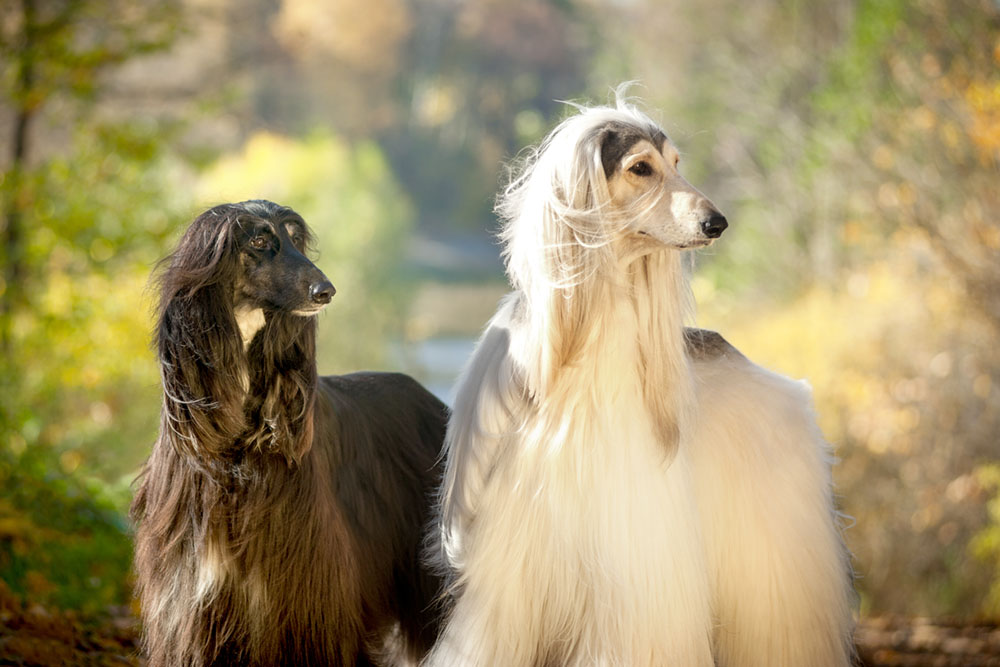Breed Profile – Afghan Hound
04/04/2017
This breed profile focuses on perhaps the most elegant of dog breeds, the Afghan Hound. Aloof and regal, yet with a lively comical side that endears them to all who meet them. Watching the Afghan class at a championship event is the canine equivalent of the Oscars red carpet, so let’s find out more about the Gwyneth Paltrow of the dog world.
History of Breed: Originating in the mountains of Afghanistan, the Afghan Hound first started appearing in the UK in the 1800s when they were brought back from British India. Their long coat helps them withstand cold temperatures and long periods outside; perfect for their original role tracking deer and wild goats.
Life Expectancy: About 12 years.
Size: Large, breed standards dictate dogs should be 68-74cm and bitches should be 63-69cm.
Features: The Afghan Hound’s long coat is its most distinctive feature. It requires a lot of grooming and maintenance to keep it clean and tangle free. A diet rich in Omega 3 and 6 will help keep it in good condition. Gilpa Kennel is nutritionally balanced and has a large biscuit; perfect for the larger mouth of a breed such as the Afghan Hound. It contains New Zealand green-lipped mussel extract, a natural source of glucosamine and chondroitin, which will protect the joints of active larger breeds.
The Kennel Club describes the Afghan Hound as having an “Oriental expression… The Afghan Hound looks at and through one”. This expression, helped in part by its triangular eye shape, combined with the elegant poise of the breed contributes to its aloofness. As a large breed, it is also strong with powerful hind legs, muscular shoulders and a good turn of speed.
Energy Levels/Exercise Required: The Afghan Hound requires a lot of exercise, over two hours per day. It particularly needs dedicated space and time to ‘gallop’. The breed is a sight hound with a chase instinct. With this in mind, outdoor areas at home need to be very secure. The breed performs well in high energy dog activities such as agility, so it could be a good idea to seek out a local club to join.
Potential Health Issues: Hypothyroidism is prevalent in Afghans. The breed can be at risk of hip and elbow dysplasia; not more so than other large breeds, but more than other sight hounds. This condition can be alleviated by feeding to condition. Similarly to Greyhounds, Afghan Hounds have low body fat and are therefore sensitive to anaesthetics. It is essential to ensure a vet has experience of dealing with Greyhound anaesthesia if surgery is required.
Temperament: Dignified, proud and, as mentioned, aloof. However, the Afghan Hound can also be lively and fun to be around.
Family Dog/Child Friendly: The Afghan Hound needs early socialising to be suitable as a pet in a family with young children. With correct socialising though, the breed can be a good companion for children and a great family dog. It also has natural prey instincts to chase other creatures that need to be taken into account when considering ownership. A large, high energy dog such as this breed is happiest in a large house with plenty of outdoor space to burn off excess energy.
Likes: Fun and games, lots of exercise.
Dislikes: Lack of exercise.



